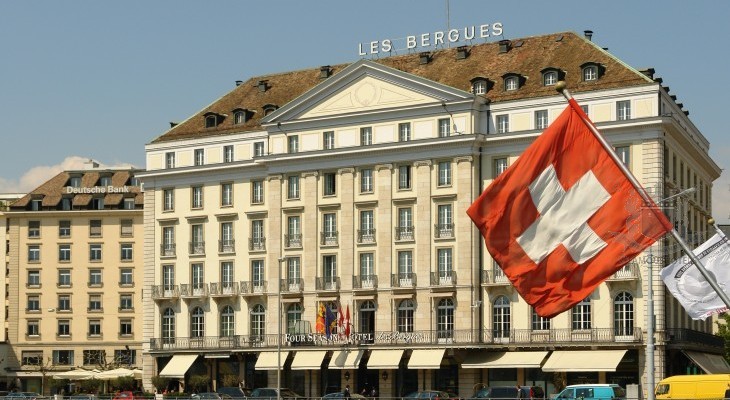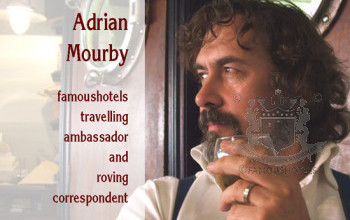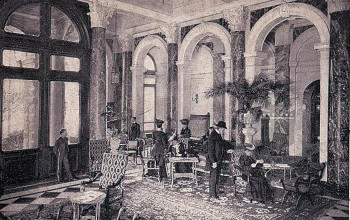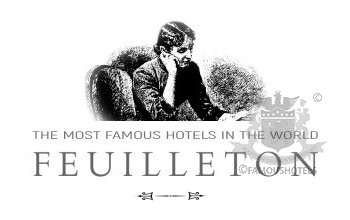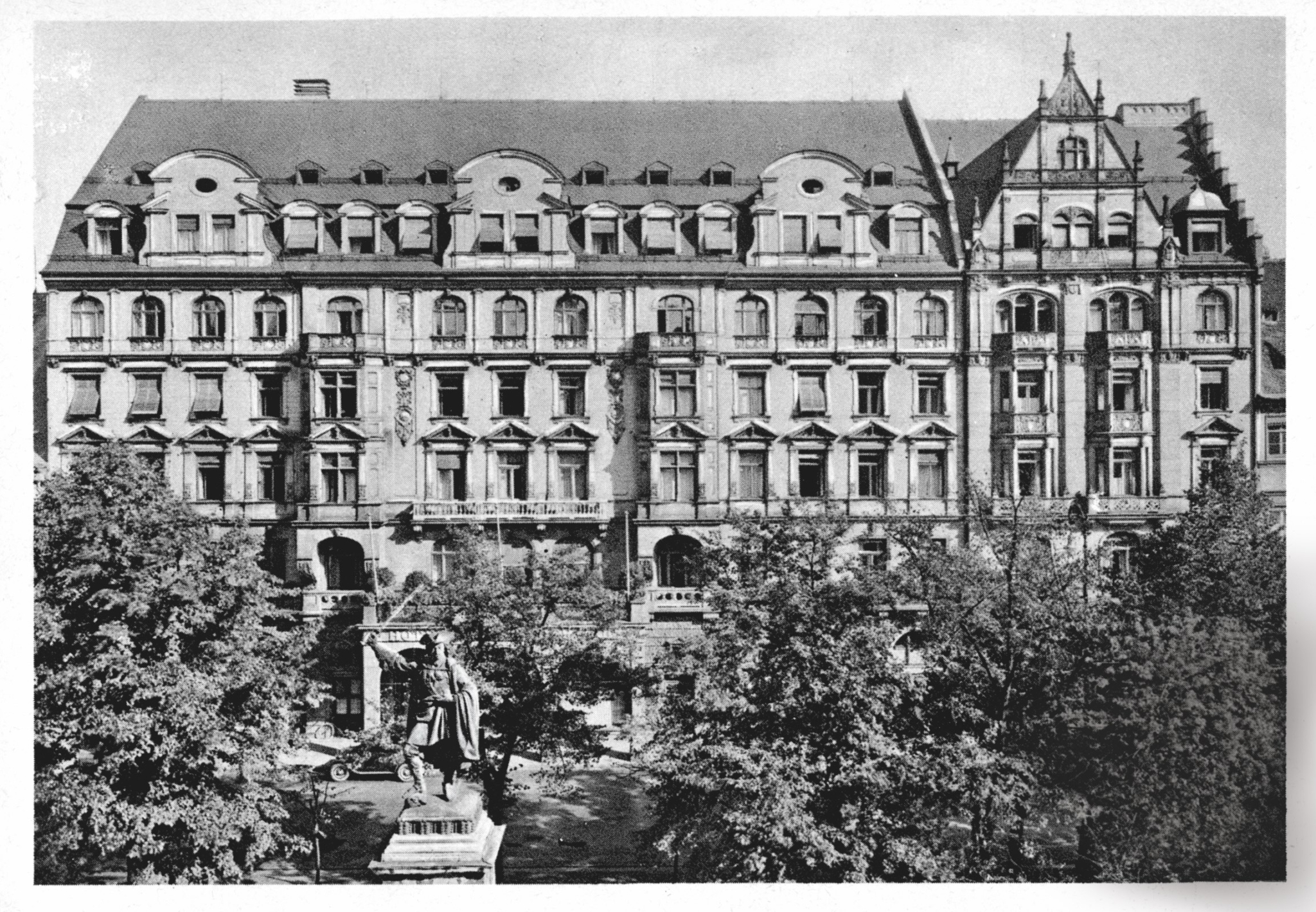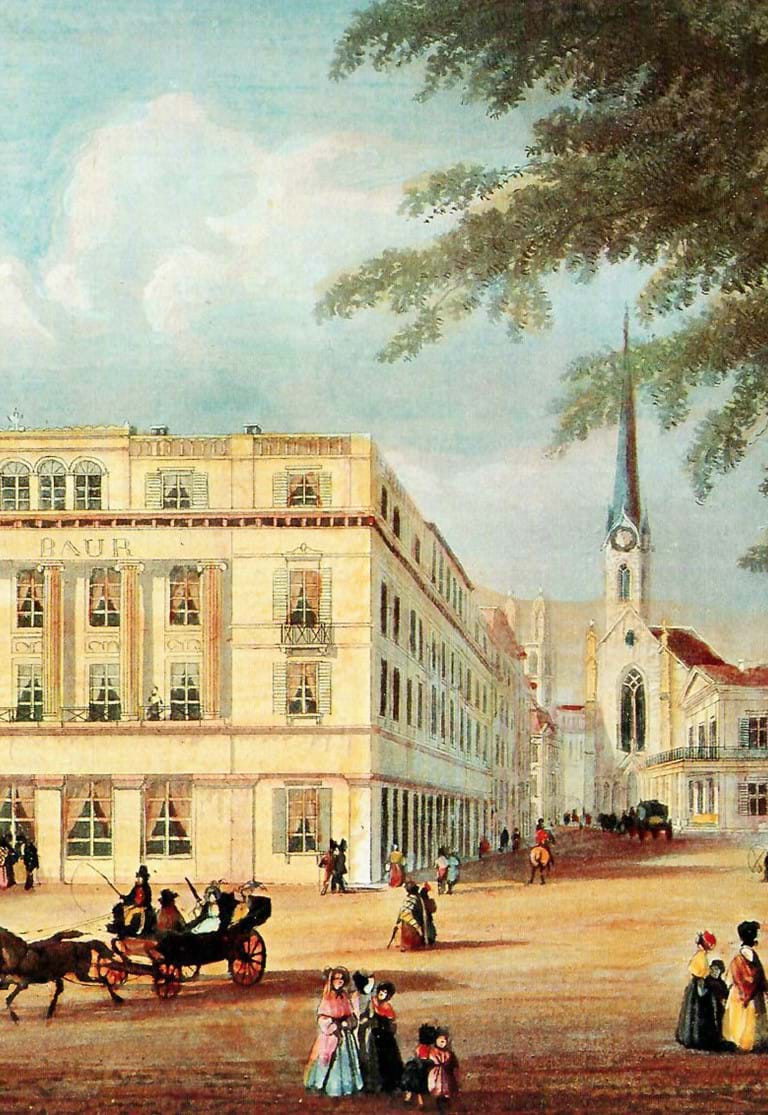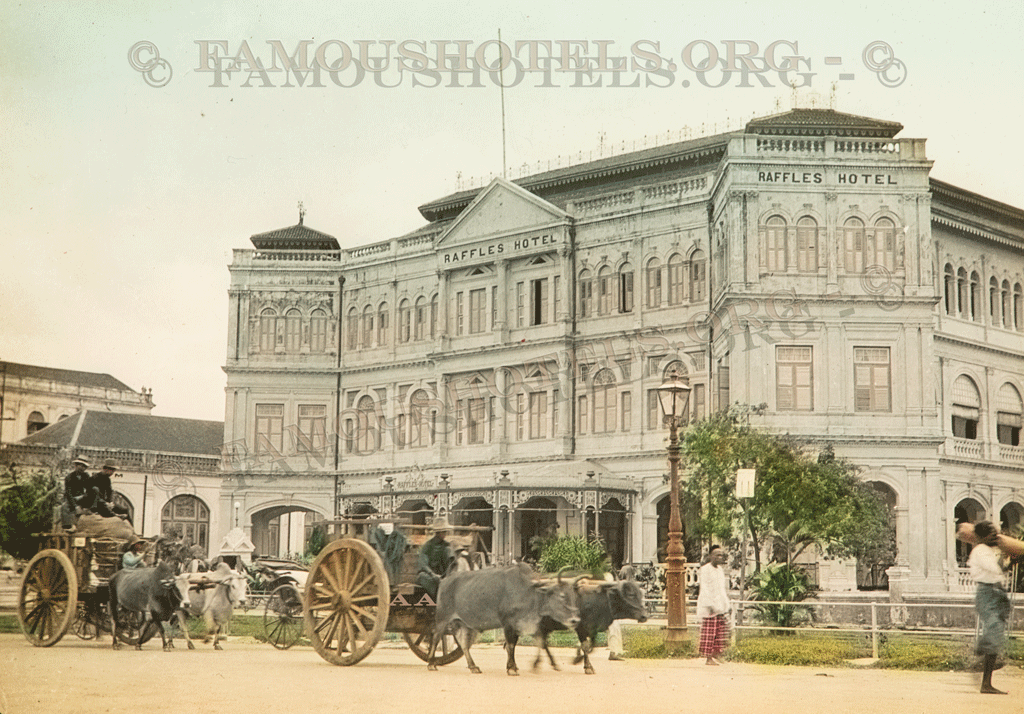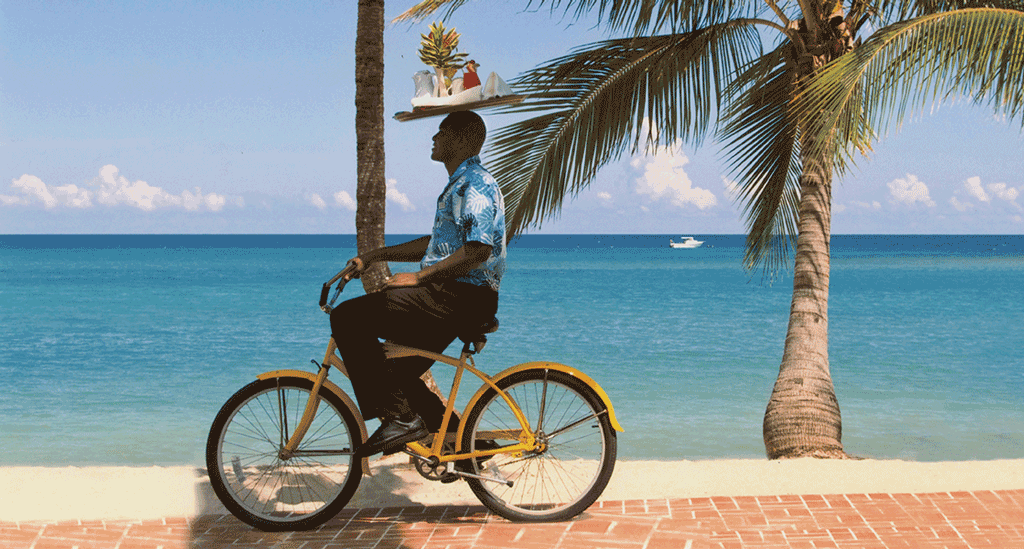The Rise of the Swiss Grand Hotel (1)
( words)
By Adrian Mourby
HOTEL DES BERGUES, GENEVA
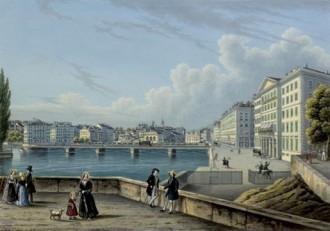
Geneva’s Hotel des Bergues (A Select Member of The Most Famous Hotels in the World) is a restrained and elegant building and full of idiosyncrasies. It is the oldest purpose-built hotel in Switzerland and it is one of the few hotels in the Four Seasons portfolio to have retained its original name.
But the name “des Bergues” has the kind of pedigree that no one would willingly give up. Its originates with a German merchant and financier called Johannes Kleberger (1486-1546). Though frequently on his travels, Herr Kleberger owned several properties in Geneva, including one on this section of quayside where Lake Geneva funnels into the Rhone river as it passes the old hilltop city. A friend of Erasmus, Hans Kleberger, had his portrait painted by Albrecht Dürer. You can see it today at Vienna’s Kunsthistorisches Museum.
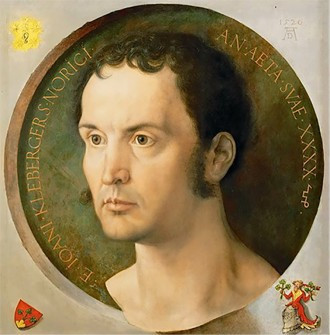
Kleberger (portrait) was renowned for his generosity which may be why in 1565, twenty years after is death, his son had to sell the ground where the hotel stands today to cover family debts. The site was bought by the City of Geneva and its buildings demolished, but already locals has begun calling this section of quay on the north bank of the Rhone “En Clébergue”, a name which was eventually shortened to “Bergues”.
By the beginning of the nineteenth century “Bergues” was a manufacturing suburb of Geneva, specialising in watch-making and textile-printing. It was also an industrial slum of such meanness that in 1816 Lord Byron, Percy Bysshe Shelley, and Mary Wolstencroft Shelley chose to live outside Geneva at Villa Diodati rather than anywhere near the foul-smelling quayside. Here they told each other ghost stories while much of Switzerland rioted because of the shortage of food following Europe’s worst summer on record. That year Mary's novel Frankenstein was born.
A few years later, in 1823 the first tourist steamboat arrived on the lake and changed Geneva’s attitude to its quayside. Business men and burghers alike recognised that the Rhone waterfront needed to become more welcoming to visitors.
In 1829, the Société des Bergues was formed by businessmen who wanted to build a hotel which would be “simple, of pure style and free of superfluous ornamentation”. Inevitably the chosen style was neo-classical.
Geneva (recently admitted to the Swiss Confederation) was keen to promote associations with the republics of Ancient Greece and therefore very partial to columns and pediments supported by pilasters.
The new hotel would be linked to the south bank of the Rhone – and thereby to the mediaeval city – by a bridge. This was designed by Colonel Guillaume-Henri Dufour, an engineer who would go on to lead the Swiss Federal Army to victory in 1847 against the troops of the Catholic cantons. His Pont des Bergues crossed the Rhone in two stages a few metres downriver from the entrance to the hotel. The bridge also linked to an artillery platform in the middle of the river (now known as Isle Rousseau) and is still the most direct way of crossing between the Hotel des Bergues and the city of Geneva.
Opened on 1 May 1834, the largest hotel in Switzerland had a piano nobile, three floors of bedrooms and an attic to accommodate staff.
According to Pedro Deakin, former Manager of Hotel de Bergues who has been working here since Four Seasons took over in 2004, this new hotel served a double function in Geneva. It was not only there to provide an attractive welcome to tourists, but to also a residence for visiting VIPS. The fortified Calvinist city on the south side of the Rhone had no palaces where royalty or aristocracy could bed down, so Hotel des Bergues was always intended as a five-star coaching inn.
When I asked Pedro about the spiral staircase hidden behind reception, he explained to me that in 1834 the hotel’s ground floor was open-sided with five arches that faced on to the quay. Guests would get down from their carriage, pass through the arches and take the stone spiral staircase to the first floor, where they would be welcomed. Of course the staircase was not broad and open because if it had been the wind from Lake Geneva would have blown straight up into the hotel proper.
As I say you can learn a lot from a hotel staircase.
P.S.: Followers of my quest for the perfect hotel martini might also be interested to know that I also learned something important about martinis during my three day stay. The Director of Sales & Marketing, Fabrice Thomé, learning of my research offered me dinner preceded by one of the hotel’s renowned gin martinis. I accepted this very happily and when the waiter asked if I would like a second martini I’m afraid I accepted that too. So what I have now learned is that the old martini maxim still holds very true indeed. “One is not enough and two is too many”.
* (Italian, "noble floor" or "noble level", also sometimes referred to by the corresponding French term, bel étage).

